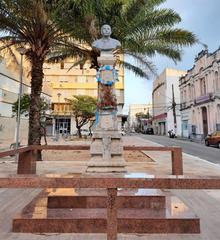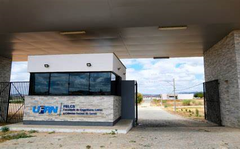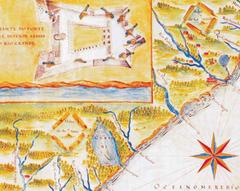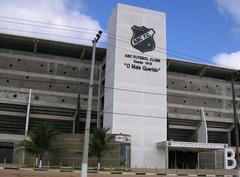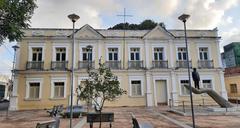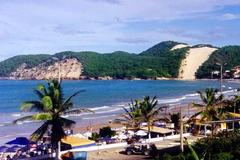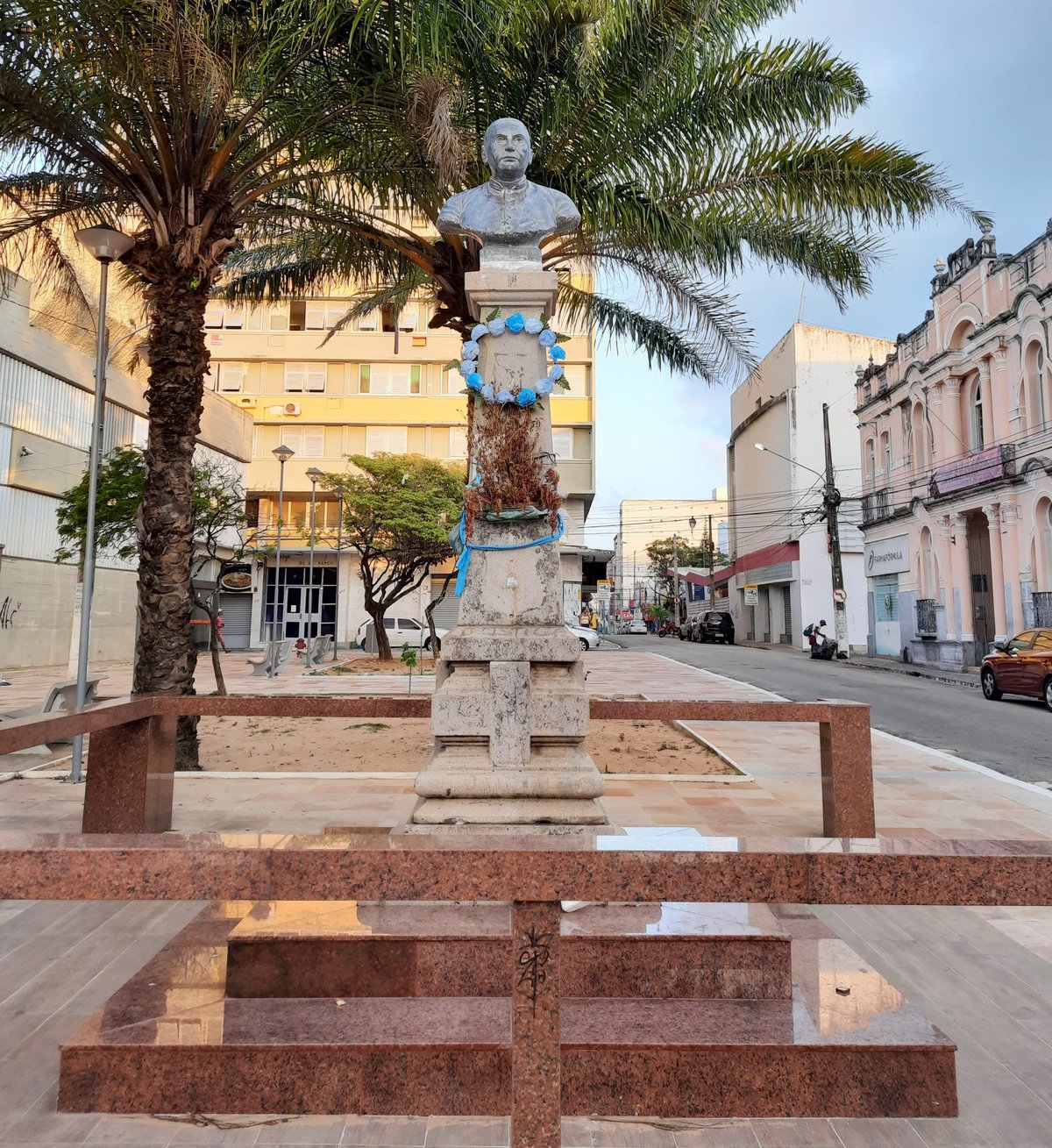
Natal Historic Center Visiting Hours, Tickets, and Travel Guide
Date: 15/06/2025
Introduction
The Historic Center of Natal, the city’s oldest urban district, offers a vivid journey through more than four centuries of colonial heritage, architectural splendor, and cultural vibrancy. Founded on December 25, 1599, by Portuguese settlers, this historic core stands as a testament to Natal’s strategic importance along Brazil’s northeastern coastline, shaped by influences from Portuguese and Dutch colonizers as well as local culture (Audiala, Wikipedia). Visitors can explore a diverse array of architectural styles, from colonial warehouses and neoclassical mansions to art deco landmarks, and immerse themselves in local traditions, festivals, and cuisine.
This comprehensive guide presents all the essential information for travelers: visiting hours, ticketing, accessibility, safety, and transportation tips. Whether you’re wandering the cobbled streets of Cidade Alta, attending a show at the Alberto Maranhão Theater, or savoring local delicacies at Mercado da Redinha, you’ll discover a destination rich in history and contemporary culture. For the latest updates, see the Natal Tourism Website and the Audiala app.
Contents Overview
- Colonial Foundations and Urban Evolution
- Key Historical Events and Influences
- Architectural and Urban Heritage
- Main Attractions and Suggested Itinerary
- Festivals, Culture, and Gastronomy
- Visitor Information: Hours, Tickets, Tours, and Accessibility
- Nearby Attractions and Photographic Spots
- Safety, Health, and Practical Tips
- Money and Costs
- Cultural Etiquette and Local Customs
- Connectivity and Communication
- Sustainable and Responsible Tourism
- Frequently Asked Questions (FAQ)
- Conclusion
Colonial Foundations and Urban Evolution
The Historic Center of Natal spans approximately 201,278 m² and is the city’s oldest and most architecturally diverse area (Wikipedia). Originally built with narrow, winding streets in the Cidade Alta and Ribeira neighborhoods, the center evolved from simple straw dwellings to robust stone and lime structures as the city’s economy flourished on sugar and cotton (IFRN Guidebook). Over the centuries, a mix of neoclassical, art deco, and proto-modernist styles blended with the colonial fabric, creating a unique urban landscape.
Key Historical Events and Influences
Significant moments in Natal’s history have left lasting marks on the Historic Center. The Dutch occupation (1633–1654) introduced new architectural elements and cultural influences (Audiala). The star-shaped Forte dos Reis Magos, constructed in 1598, became a symbol of the city’s military legacy (Audiala).
Natal also holds milestones in Brazilian history: Rio Grande do Norte was the first state to abolish slavery and to elect a female mayor (Audiala).
Architectural and Urban Heritage
The Historic Center boasts more than 150 buildings of historical and architectural significance (Wikipedia). Noteworthy landmarks include:
- Forte dos Reis Magos: Iconic 16th-century star-shaped fortress at the city’s origin.
- Alberto Maranhão Theater: Early 20th-century venue for cultural performances.
- Solar Bela Vista: Grand neoclassical mansion serving as a cultural center.
- Mother Church of Our Lady of the Presentation (Old Cathedral): Late 17th-century church, symbolic of Natal’s faith and resilience (Audiala).
- Palácio Potengi: Former government seat, now the state’s main art gallery.
- Sobradinho: Heritage townhouse.
- Justice Memorial: Museum of regional judicial history.
- Beco da Lama: Bohemian area famed for its nightlife and artistic community (Wikipedia).
Main Attractions and Suggested Itinerary
Forte dos Reis Magos
- Hours: Daily, 8:00 AM–6:00 PM
- Tickets: Around R$6 for adults; children and seniors may enter for free. Buy tickets at the entrance.
- Highlights: Explore the ramparts, inner chambers, and a museum tracing the fort’s and city’s history. (brazilcityguides.com)
Igreja de Santo Antônio and Relicário dos Mártires
- Hours: Daily, 7:00 AM–7:00 PM
- Tickets: Free entry
Palácio Potengi (Pinacoteca do Estado)
- Hours: Tuesday–Sunday, 9:00 AM–5:00 PM
- Tickets: Free entry
- Features: Grand neoclassical interiors and a significant art collection.
Solar Bela Vista
- Hours: Wednesday–Sunday, 10:00 AM–6:00 PM
- Tickets: Free entry
- Features: Art nouveau and neoclassical architecture; hosts exhibitions and concerts.
Casa de Câmara Cascudo
- Hours: Tuesday–Saturday, 9:00 AM–5:00 PM
- Tickets: Around R$4; discounts for students and seniors.
Mercado da Redinha
- Hours: Daily, 7:00 AM–10:00 PM
- Features: Local cuisine and crafts.
Suggested Itinerary
- Morning: Tour Forte dos Reis Magos, then stroll Cidade Alta to the Old Cathedral and Memorial Câmara Cascudo.
- Afternoon: Lunch at a local eatery; visit Alberto Maranhão Theater and Solar Bela Vista.
- Evening: Enjoy Beco da Lama’s vibrant atmosphere or unwind at the beach (Audiala).
Festivals, Culture, and Gastronomy
Annual and Local Festivals
- Carnival: Intimate street parties with samba and forró in the Historic Center (Next Stop Brazil).
- Christmas: December festivities with illuminations and concerts in Praça André de Albuquerque (Bahia.ws).
- Concerts and Live Music: Regular performances at Teatro Alberto Maranhão and local bars (Bandsintown).
Local Culture and Traditions
- Architecture: More than 150 buildings in styles from colonial to art deco.
- Music & Dance: Forró, samba, and MPB are central, especially during festivals (Best Pub Crawl).
- Religious Events: Nossa Senhora da Apresentação (Nov 21) and Festa Junina (June) with processions, folk dances, and traditional foods.
Gastronomy
- Carne de Sol com Macaxeira: Sun-dried beef with manioc (Bahia.ws).
- Ginga com Tapioca: Fried fish in tapioca pancakes, a regional favorite.
- Seafood and Sweets: Shrimp in pumpkin (moranga), cocada (coconut treat) (Best Pub Crawl).
- Dining Tips: Visit Mercado da Redinha or local cafés for authentic flavors.
Visitor Information: Hours, Tickets, Tours, and Accessibility
- Most Sites: Tuesday–Sunday, 9:00 AM–5:00 PM; some venues closed Mondays.
- Ticket Prices: Typically free to R$10–R$20; discounts for students/seniors.
- Guided Tours: Available via agencies and hotels; advance booking recommended (Destinationless Travel).
- Accessibility: Historic architecture may limit wheelchair access, but improvements are ongoing.
- Getting There: The district is walkable; taxis, ride-hailing apps, and buses provide city-wide access.
Nearby Attractions and Photographic Spots
- Praia do Forte: Beach near the fortress, great for photos.
- Catedral Metropolitana: Major religious site.
- Rua Chile: Lined with historic mansions and lively cafes.
Safety, Health, and Practical Tips
- General Safety: The area is safe by day; exercise caution at night and avoid poorly lit or deserted areas (Travel.gc.ca, TravelSafe-Abroad).
- Emergency Contacts: Police 190, Medical 192.
- Health: Drink bottled water; stay current with vaccines; use mosquito repellent; travel insurance is advisable.
- Money: Brazilian Real (BRL); cards widely accepted, but carry cash for small purchases.
- Costs: Meals R$30–R$80; attraction entry up to R$20; taxis R$15–R$30 within central areas.
Cultural Etiquette and Local Customs
- Dress modestly in religious sites.
- Ask before photographing people.
- Tipping: 10% is customary in restaurants.
Connectivity and Communication
- Wi-Fi is available in most hotels and cafés.
- Local SIM cards provide reliable data.
- Basic Portuguese is useful; translation apps recommended.
Sustainable and Responsible Tourism
- Respect heritage sites—do not litter or damage property.
- Support local businesses and artisans.
Frequently Asked Questions (FAQ)
Q: What are the standard visiting hours?
A: Most attractions are open Tuesday–Sunday, 9:00 AM–5:00 PM; some close Mondays.
Q: How much are tickets for Forte dos Reis Magos?
A: Around R$10; discounts may apply.
Q: Is the Historic Center safe?
A: Yes, especially during the day. Use caution at night.
Q: Are guided tours available?
A: Yes, both group and private tours can be arranged.
Q: Can I use credit cards?
A: Cards are accepted at most venues; small cash is useful.
Visuals and Media
For a more immersive experience, explore high-quality images and virtual tours on the Audiala app and local tourism websites.
Conclusion
The Historic Center of Natal is a living chronicle of Brazil’s colonial past, enriched by vibrant festivals, diverse architecture, and distinctive gastronomy. With well-planned visitor services, ongoing preservation efforts, and a warm local community, the district welcomes travelers to explore its storied streets, partake in cultural celebrations, and savor local cuisine. For a seamless and informed visit, download the Audiala app, consult official tourism channels, and consider joining a guided tour. The Historic Center is not only a destination but a dynamic celebration of northeastern Brazilian heritage.
Sources and Further Reading
- Historic Center of Natal – Wikipedia
- Natal – Audiala Guide
- Centro histórico de Natal – IFRN Guidebook
- Bahia.ws – Tourism Guide to Natal
- Best Pub Crawl – Is It Safe to Visit Natal?
- Travel.gc.ca – Brazil Travel Advice
- Destinationless Travel – Things to Do in Natal, Brazil
- Brazil City Guides – Natal Travel Guide
- Next Stop Brazil – 10 Best Festivals in Brazil Calendar
- US State Department Travel Advisory
- TravelSafe-Abroad – Brazil
